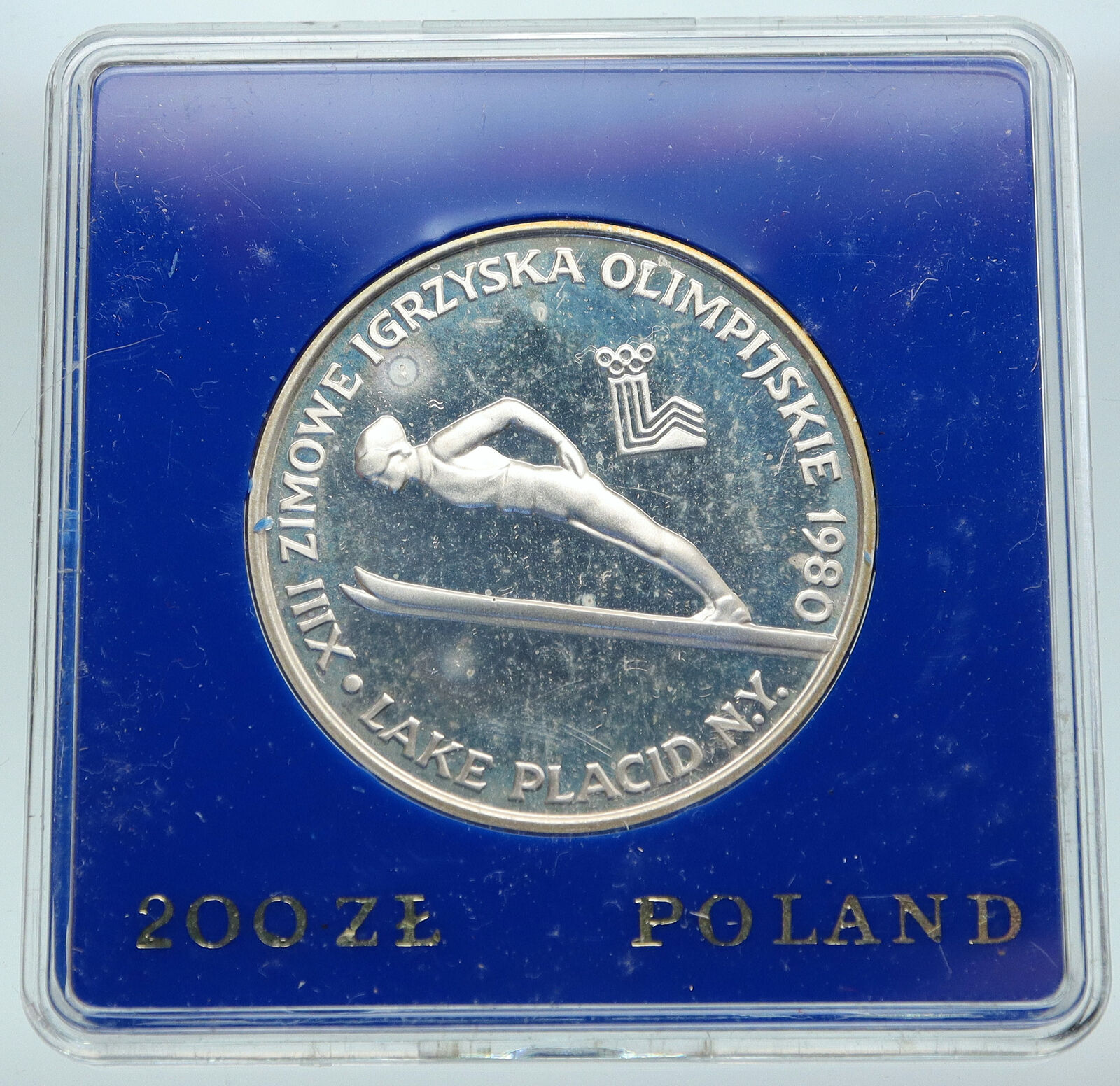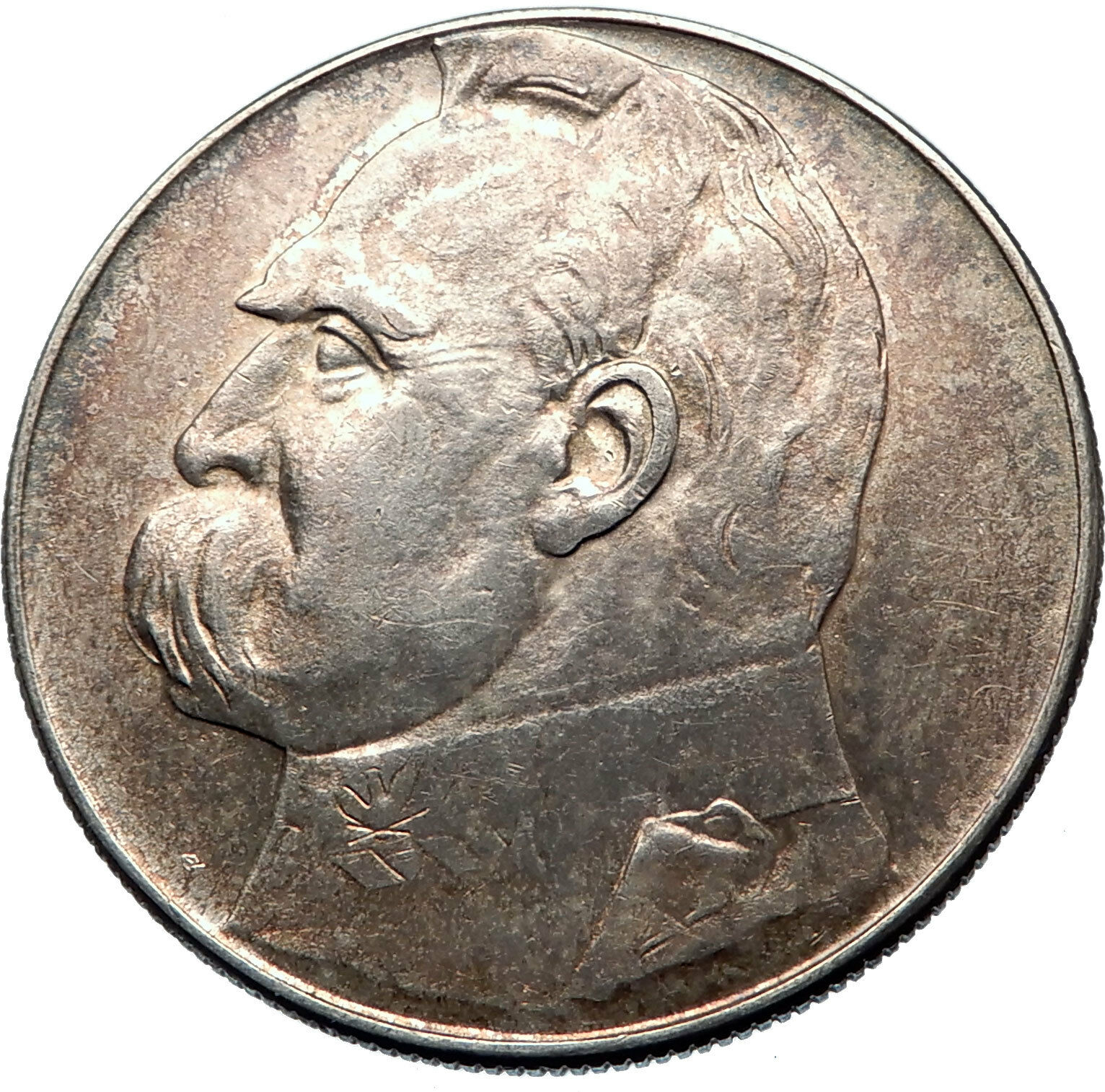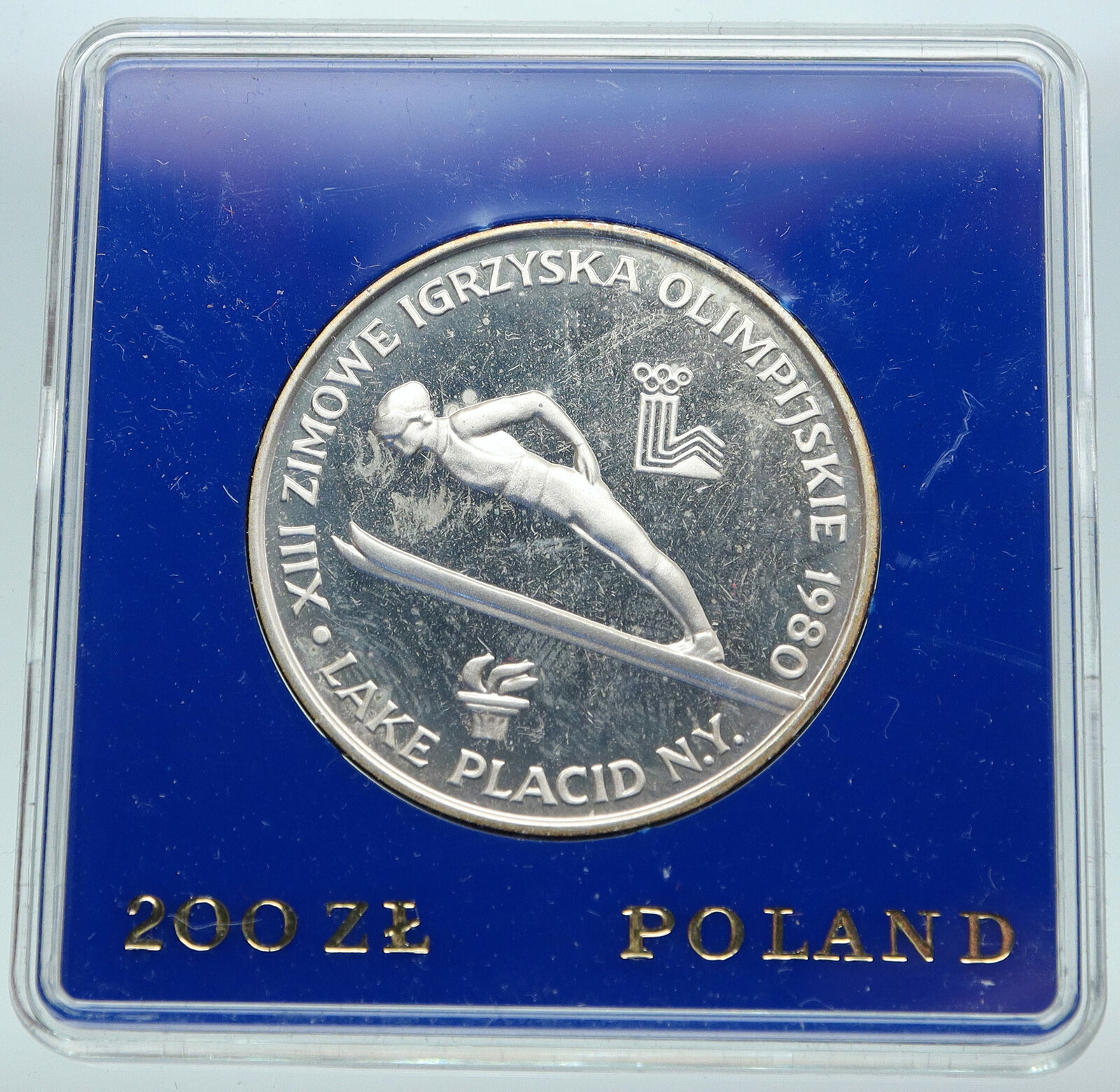|
Poland
Sigismund I – King: 8 December 1506 – 1 April 1548
1531 Silver 1 Grosz 22mm (2.04 grams)
Reference: Kop# 3081, Kop# 3083, Kop# 3084, Kop# 3085, Kop# 3086 *SIGIS *I* REX *PO* DO* TOCI* PRVSS, Sigismund facing right.
*GROSS* COMV* TERR* PRVSS* 1532, Eagle with sword within circle.
You are bidding on the exact item pictured, provided with a Certificate of Authenticity and Lifetime Guarantee of Authenticity.
 Sigismund I the Old (Polish: Zygmunt I Stary, Lithuanian: Žygimantas II Senasis; 1 January 1467 – 1 April 1548) was King of Poland and Grand Duke of Lithuania from 1506 until his death in 1548. Sigismund I was a member of the Jagiellonian dynasty, the son of Casimir IV and younger brother of kings John I Albert and Alexander I Jagiellon. He was nicknamed “the Old” in later historiography to distinguish him from his son and successor, Sigismund II Augustus. Sigismund I the Old (Polish: Zygmunt I Stary, Lithuanian: Žygimantas II Senasis; 1 January 1467 – 1 April 1548) was King of Poland and Grand Duke of Lithuania from 1506 until his death in 1548. Sigismund I was a member of the Jagiellonian dynasty, the son of Casimir IV and younger brother of kings John I Albert and Alexander I Jagiellon. He was nicknamed “the Old” in later historiography to distinguish him from his son and successor, Sigismund II Augustus.
Sigismund was born in the town of Kozienice in 1467 as the fifth son of Casimir IV and his wife Elizabeth of Austria. He was one of thirteen children and was not expected to assume the throne after his father. Sigismund’s eldest brother and rightful heir Vladislaus II instead became the King of Bohemia, Hungary and Croatia as the successor to George of Poděbrady in Bohemia and then to Matthias Corvinus in Hungary, thus temporarily uniting these kingdoms. When Casimir died, the Polish-Lithuanian realm was divided between the remaining two older sons, with John Albert being crowned King of Poland, and Alexander as Grand Duke of Lithuania. Alexander inherited Poland following John Albert’s sudden death in 1501. Hence, Sigismund’s reign only began when he succeeded Alexander to both titles in 1506 at the age of 39.
A capable monarch and a patron of arts, Sigismund established Polish rule over Ducal Prussia and annexed the Duchy of Mazovia with Warsaw, whilst retaining the nation’s wealth and prominence in the region. He assured that his nephew Albert, Duke of Prussia, and his Protestant successors will pay a feudal homage or tribute to Polish monarchs as a sign of political and diplomatic dependence. This was observed until the Treaty of Bromberg in 1657 when Prussia gained its sovereignty. Sigismund and commander Jan Amor Tarnowski also defeated Moldavia at Obertyn in 1531 and Muscovy in 1535, thereby strengthening the country’s eastern borders. His 42-year reign was further marked by decisive contributions to Polish architecture, cuisine, language and customs, especially at the behest of his second wife, the Italian-born Bona Sforza. Italian styles and fashions dominated at the height of the Polish Renaissance and Polish Golden Age, which developed the Roman Catholic identity of Poland. He was commemorated on a contemporary 200-złoty banknote.
Sigismund was married twice, first to noblewoman Barbara Zápolya from Hungary and then to Bona Sforza, the daughter of Gian Galeazzo Sforza, Duke of Milan. Their only son and the last Jagiellon king, Sigismund Augustus, was co-crowned vivente rege in 1529 and formally assumed throne when Sigismund the Old died in 1548.
 Poland, officially the Republic of Poland, is a country in Central Europe, bordered by Germany to the west; the Czech Republic and Slovakia to the south; Ukraine and Belarus to the east; and the Baltic Sea, Kaliningrad Oblast (a Russian exclave) and Lithuania to the north. The total area of Poland is 312,679 square kilometres (120,726 sq mi), making it the 69th largest country in the world and the 9th largest in Europe. With a population of over 38.5 million people, Poland is the 34th most populous country in the world, the 8th most populous country in Europe and the sixth most populous member of the European Union, as well as the most populous post-communist member of the European Union. Poland is a unitary state divided into 16 administrative subdivisions. Poland, officially the Republic of Poland, is a country in Central Europe, bordered by Germany to the west; the Czech Republic and Slovakia to the south; Ukraine and Belarus to the east; and the Baltic Sea, Kaliningrad Oblast (a Russian exclave) and Lithuania to the north. The total area of Poland is 312,679 square kilometres (120,726 sq mi), making it the 69th largest country in the world and the 9th largest in Europe. With a population of over 38.5 million people, Poland is the 34th most populous country in the world, the 8th most populous country in Europe and the sixth most populous member of the European Union, as well as the most populous post-communist member of the European Union. Poland is a unitary state divided into 16 administrative subdivisions.
 The establishment of a Polish state can be traced back to 966, when Mieszko I, ruler of a territory roughly coextensive with that of present-day Poland, converted to Christianity. The Kingdom of Poland was founded in 1025, and in 1569 it cemented a longstanding political association with the Grand Duchy of Lithuania by signing the Union of Lublin. This union formed the Polish-Lithuanian Commonwealth, one of the largest and most populous countries of 16th and 17th-century Europe. The Commonwealth ceased to exist in the years 1772-1795, when its territory was partitioned among Prussia, the Russian Empire, and Austria. Poland regained its independence (as the Second Polish Republic) at the end of World War I, in 1918. The establishment of a Polish state can be traced back to 966, when Mieszko I, ruler of a territory roughly coextensive with that of present-day Poland, converted to Christianity. The Kingdom of Poland was founded in 1025, and in 1569 it cemented a longstanding political association with the Grand Duchy of Lithuania by signing the Union of Lublin. This union formed the Polish-Lithuanian Commonwealth, one of the largest and most populous countries of 16th and 17th-century Europe. The Commonwealth ceased to exist in the years 1772-1795, when its territory was partitioned among Prussia, the Russian Empire, and Austria. Poland regained its independence (as the Second Polish Republic) at the end of World War I, in 1918.
 In September 1939, World War II started with the invasions of Poland by Nazi Germany and the Soviet Union (as part of the Molotov-Ribbentrop Pact). More than six million Polish citizens died in the war. In 1944, a Soviet-backed Polish Committee of National Liberation was formed which, after a falsified referendum in 1947 took control of the country and Poland became a satellite state of the Soviet Union, as People’s Republic of Poland. During the Revolutions of 1989 Poland’s Communist government was overthrown and Poland adopted a new constitution establishing itself as a democracy. In September 1939, World War II started with the invasions of Poland by Nazi Germany and the Soviet Union (as part of the Molotov-Ribbentrop Pact). More than six million Polish citizens died in the war. In 1944, a Soviet-backed Polish Committee of National Liberation was formed which, after a falsified referendum in 1947 took control of the country and Poland became a satellite state of the Soviet Union, as People’s Republic of Poland. During the Revolutions of 1989 Poland’s Communist government was overthrown and Poland adopted a new constitution establishing itself as a democracy.
Despite the large number of casualties and destruction the country experienced during World War II, Poland managed to preserve much of its cultural wealth. There are 14 heritage sites inscribed on the UNESCO World Heritage and 54 Historical Monuments and many objects of cultural heritage in Poland.
Since the beginning of the transition to a primarily market-based economy that took place in the early 1990s, Poland has achieved a “very high” ranking on the Human Development Index, as well as gradually improving economic freedom. Poland is a democratic country with an advanced high-income economy, a high quality of life and a very high standard of living. Moreover, the country is visited by nearly 16 million tourists every year (2013), which makes it one of the most visited countries in the world. Poland is the sixth largest economy in the European Union and among the fastest rising economic states in the world. The country is the sole member nation of the European Union to have escaped a decline in GDP and in recent years was able to “create probably the most varied GDP growth in its history” according to OANDA, a Canadian-based foreign exchange company. Furthermore, according to the Global Peace Index for 2014, Poland is one of the safest countries in the world to live in.
|





 Sigismund I the Old (Polish: Zygmunt I Stary, Lithuanian: Žygimantas II Senasis; 1 January 1467 – 1 April 1548) was King of Poland and Grand Duke of Lithuania from 1506 until his death in 1548. Sigismund I was a member of the Jagiellonian dynasty, the son of Casimir IV and younger brother of kings John I Albert and Alexander I Jagiellon. He was nicknamed “the Old” in later historiography to distinguish him from his son and successor, Sigismund II Augustus.
Sigismund I the Old (Polish: Zygmunt I Stary, Lithuanian: Žygimantas II Senasis; 1 January 1467 – 1 April 1548) was King of Poland and Grand Duke of Lithuania from 1506 until his death in 1548. Sigismund I was a member of the Jagiellonian dynasty, the son of Casimir IV and younger brother of kings John I Albert and Alexander I Jagiellon. He was nicknamed “the Old” in later historiography to distinguish him from his son and successor, Sigismund II Augustus. Poland, officially the Republic of Poland, is a country in Central Europe, bordered by Germany to the west; the Czech Republic and Slovakia to the south; Ukraine and Belarus to the east; and the Baltic Sea, Kaliningrad Oblast (a Russian exclave) and Lithuania to the north. The total area of Poland is 312,679 square kilometres (120,726 sq mi), making it the 69th largest country in the world and the 9th largest in Europe. With a population of over 38.5 million people, Poland is the 34th most populous country in the world, the 8th most populous country in Europe and the sixth most populous member of the European Union, as well as the most populous post-communist member of the European Union. Poland is a unitary state divided into 16 administrative subdivisions.
Poland, officially the Republic of Poland, is a country in Central Europe, bordered by Germany to the west; the Czech Republic and Slovakia to the south; Ukraine and Belarus to the east; and the Baltic Sea, Kaliningrad Oblast (a Russian exclave) and Lithuania to the north. The total area of Poland is 312,679 square kilometres (120,726 sq mi), making it the 69th largest country in the world and the 9th largest in Europe. With a population of over 38.5 million people, Poland is the 34th most populous country in the world, the 8th most populous country in Europe and the sixth most populous member of the European Union, as well as the most populous post-communist member of the European Union. Poland is a unitary state divided into 16 administrative subdivisions. The establishment of a Polish state can be traced back to 966, when Mieszko I, ruler of a territory roughly coextensive with that of present-day Poland, converted to Christianity. The Kingdom of Poland was founded in 1025, and in 1569 it cemented a longstanding political association with the Grand Duchy of Lithuania by signing the Union of Lublin. This union formed the Polish-Lithuanian Commonwealth, one of the largest and most populous countries of 16th and 17th-century Europe. The Commonwealth ceased to exist in the years 1772-1795, when its territory was partitioned among Prussia, the Russian Empire, and Austria. Poland regained its independence (as the Second Polish Republic) at the end of World War I, in 1918.
The establishment of a Polish state can be traced back to 966, when Mieszko I, ruler of a territory roughly coextensive with that of present-day Poland, converted to Christianity. The Kingdom of Poland was founded in 1025, and in 1569 it cemented a longstanding political association with the Grand Duchy of Lithuania by signing the Union of Lublin. This union formed the Polish-Lithuanian Commonwealth, one of the largest and most populous countries of 16th and 17th-century Europe. The Commonwealth ceased to exist in the years 1772-1795, when its territory was partitioned among Prussia, the Russian Empire, and Austria. Poland regained its independence (as the Second Polish Republic) at the end of World War I, in 1918. In September 1939, World War II started with the invasions of Poland by Nazi Germany and the Soviet Union (as part of the Molotov-Ribbentrop Pact). More than six million Polish citizens died in the war. In 1944, a Soviet-backed Polish Committee of National Liberation was formed which, after a falsified referendum in 1947 took control of the country and Poland became a satellite state of the Soviet Union, as People’s Republic of Poland. During the Revolutions of 1989 Poland’s Communist government was overthrown and Poland adopted a new constitution establishing itself as a democracy.
In September 1939, World War II started with the invasions of Poland by Nazi Germany and the Soviet Union (as part of the Molotov-Ribbentrop Pact). More than six million Polish citizens died in the war. In 1944, a Soviet-backed Polish Committee of National Liberation was formed which, after a falsified referendum in 1947 took control of the country and Poland became a satellite state of the Soviet Union, as People’s Republic of Poland. During the Revolutions of 1989 Poland’s Communist government was overthrown and Poland adopted a new constitution establishing itself as a democracy.




